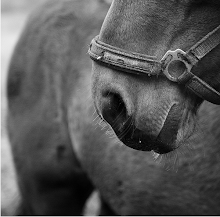
Sam Raimi (director of the Spiderman series and most recently Drag Me To Hell) says that he loves making films for a horror audience because they turn up wanting to be moved. They are willing to, as Stanislavski says ‘suspend their mantle of disbelief’.
“To be moved” is the primary aim of the cinemagoer, regardless of the direction. We watch a motion picture to have a motion within ourselves.
Of the two biggest releases of the past week, one manages to move so entirely, and another fails completely in its task.
Paranormal Activity manages to seemingly transcend the boundaries of what it is possible for us to believe when we watch a film. Knowing full well you are watching something that is scripted and performed by actors, with a continuity person standing next to the director, knowing the catering truck is parked outside, does not quell the overwhelming sensation that you are watching something truly evil and entirely possible unfold before you.
The film is so successful in achieving its goals, and yet it is simply a ‘monster in the house’ supernatural horror that we’ve seen in many incantations before. Yet to convince a cynical modern-day audience that they are experiencing something real goes beyond clever marketing to the essence of any good film: story and performance. Both of these elements are really solid.
The way in which suspense builds to the point that the viewer is begging for the scare, just to release them from the vice-like grip the director holds over his audience is almost Hitchcock-ian.
It is the sort of low budget, seemingly homemade film that can only come along once every few years - just long enough for us to forget the marketing genius that ignited water-cooler discussions the world over almost a decade ago with The Blair Witch Project.
Paranormal Activity was made for US $15,000 and in it’s opening weekend made over $9.1 million in the US making it the most profitable film in history. Where the Wild Things Are, made for close to US$100 million lies at the opposite end of the spectrum in terms of budget and effect.
Spike Jonze has always had an air of ‘skater punk’ about him. Even though his first two films (Being John Malkovich, Adaptation) were deemed praiseworthy by the cantankerous stalwarts of The Academy, he always remained a member of the American-early-naughties-underground through his numerous music and skate videos (most famously ‘Praise You’ by Fatboy Slim and ‘It’s Oh So Quiet’ by Bjork) and his producing Jackass: The Movie.
In WTWTA, there is something about the plight of the misunderstood protagonist, defying the oppressions of ordinance that ring true with what I imagine the filmmaker himself had to endure when fighting for his right to make the film he wanted: a slow and painful birth, where evil Warner Brothers tried to get him to re-staff and re-shoot in light of the delivery of a film that was deemed “too weird” and “too scary” for a youth-targeted general release.
But his damn-the-man attempts fall short, in that – unlike his earlier feature film works that manage to keep one foot in the surreal but still tell a moving story – with this he has created a two-hour music video.
The dour colour palette, the mumbled dialogue as fantasy characters talk out their feelings, the long art-house silences, the indi-as-it-gets melancholic soundtrack by Karen O of the Yeah Yeah Yeah’s. These are all worth fighting for in the face of a studio system that usually demands a colourful result-driven product. But because these elements are not hinged on a story in which a character needs to achieve something, it’s very hard to become emotionally involved. The set up is there, the characters are well established, but from the time he arrives in the land of the wild things the lead character never actually WANTS anything, therefore there is no story.
So by the time Max is saying goodbye the James Gandolfini-voiced best friend creature, Carol, his computer-generated face portraying as much ET-inspired puppy-dog longing as animaters can muster, one can’t help but ponder what’s for dinner.
The unfortunate thing about Where The Wild Things Are is it wont be the commercial or critical success that we had hoped it might be, which might further prevent studios from investing money in films by dudes who where skate shoes with suits to premiers. It will no doubt be the film which wary investors list when bargaining against taking a punt on another maverick in the near future.
Oren Pelli, the unknown director of Paranormal Activity has instantly green-lit his next picture, and rightly so. In terms of ‘time exchanged for emotional experiential value for money’, Paranormal Activity succeeds in every way that Wild Things doesn’t.


No comments:
Post a Comment